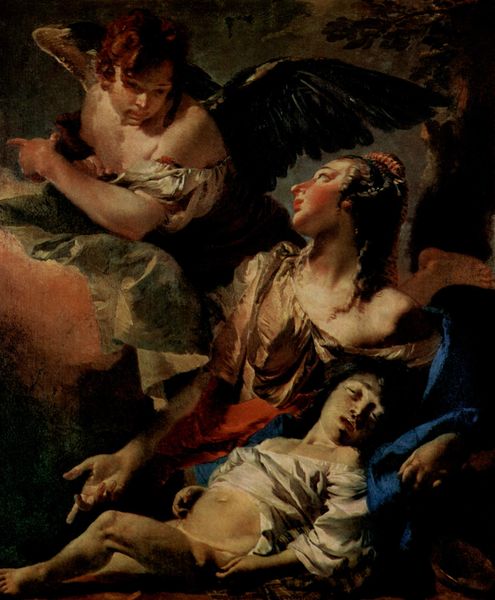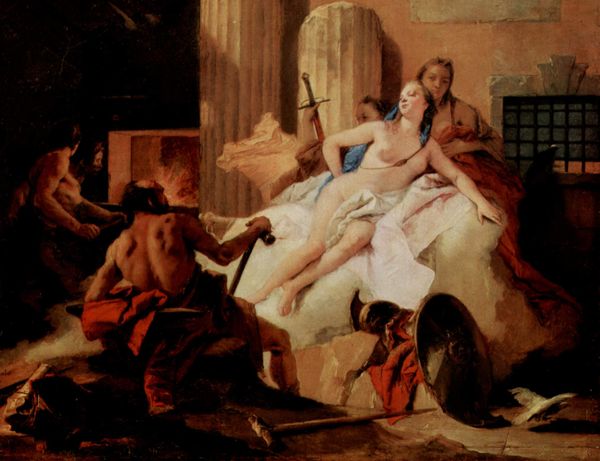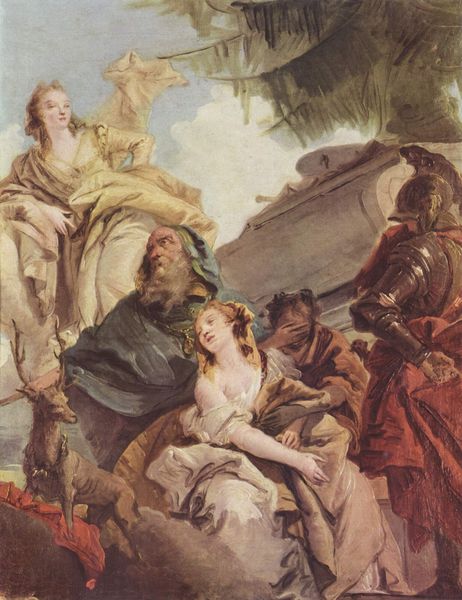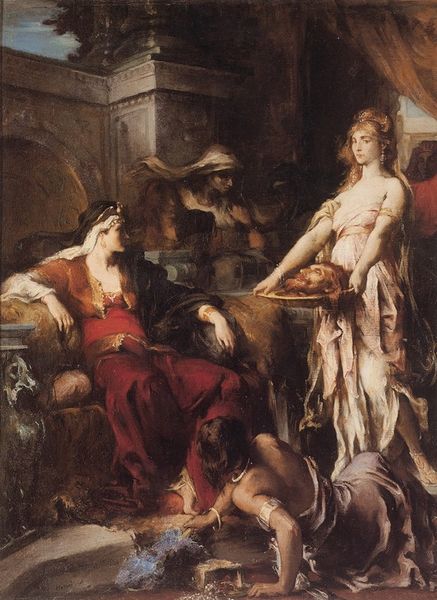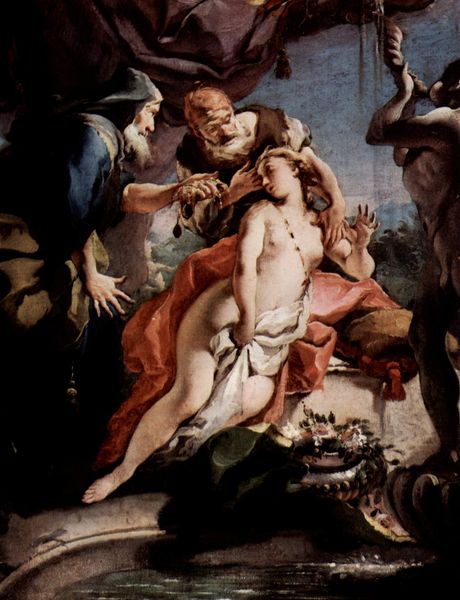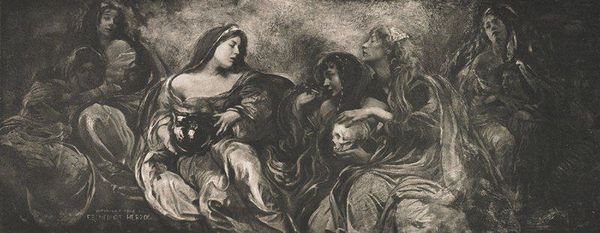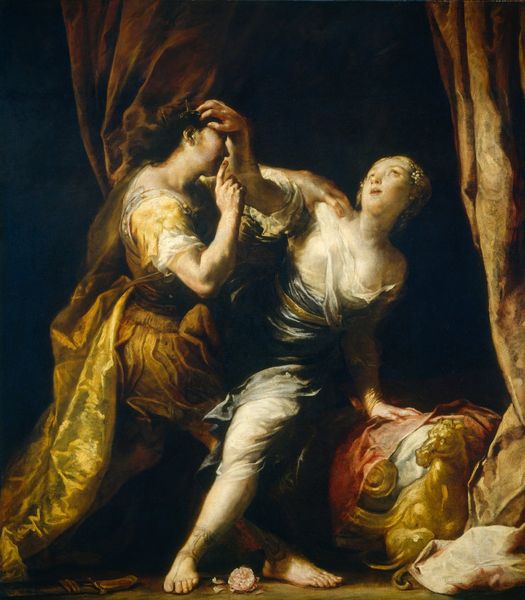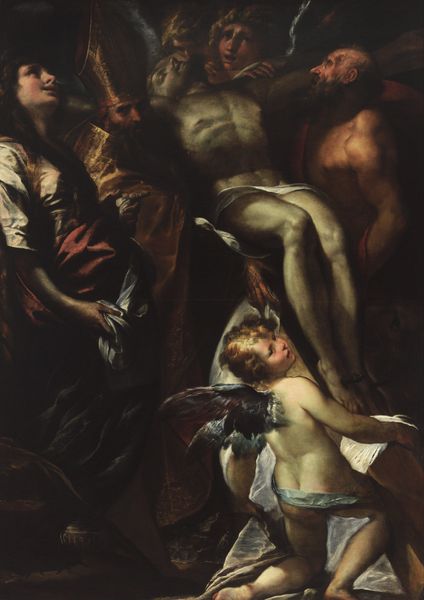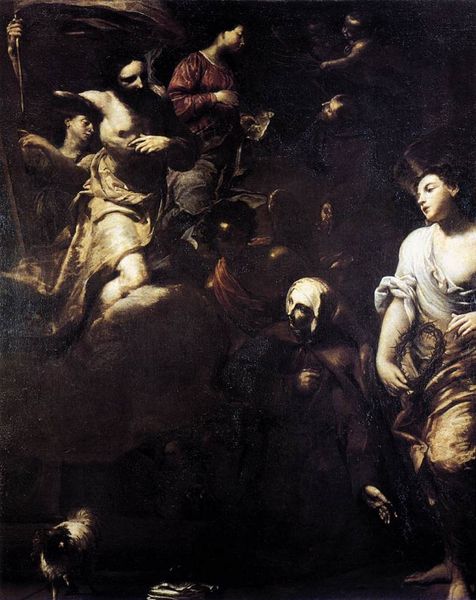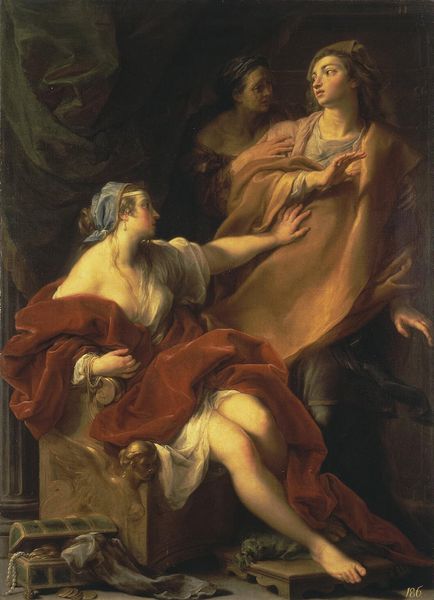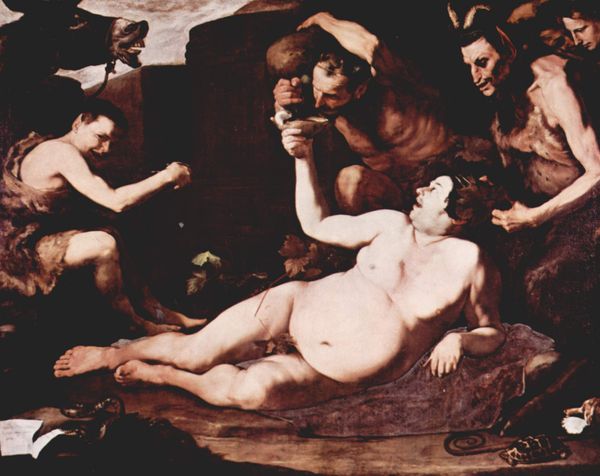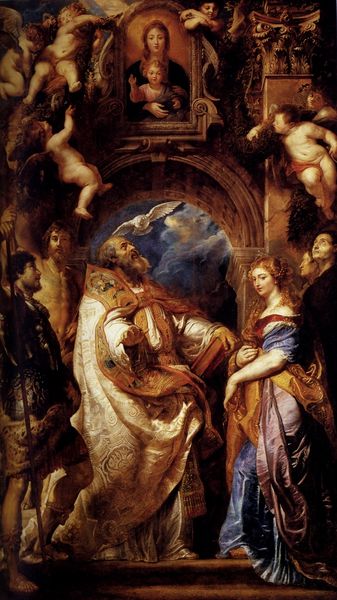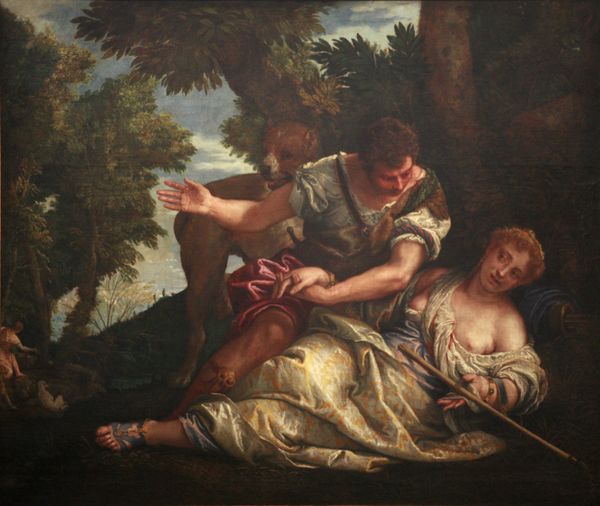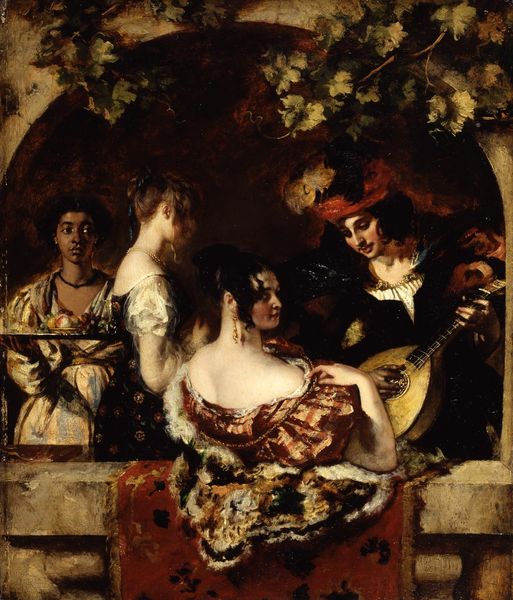
painting, oil-paint
#
portrait
#
water colours
#
allegory
#
baroque
#
painting
#
oil-paint
#
figuration
#
christianity
#
mythology
#
history-painting
#
italian-renaissance
#
rococo
#
christ
Dimensions: 184 x 131 cm
Copyright: Public domain
Curator: Looking at this oil painting from 1750, titled "The Martyrdom of St Agatha" by Giovanni Battista Tiepolo, one is immediately struck by the violence, both implied and visible, but the scene also contains softer tones that soften that perception, initially. Editor: Indeed, there's a powerful tension. The artist's treatment of light, specifically the tenebrism, emphasizes the stark contrast between Agatha's pallid skin and the darkness of the figures looming behind her. Curator: I agree; and what's compelling is the artist's positioning of Agatha as a counterpoint to the patriarchal structures and societal expectations of her time. The historical St. Agatha was persecuted and martyred for her devotion to Christianity and refusal to renounce her faith or marry a pagan official. Editor: The swirling brushstrokes contribute to the scene's turbulence; look closely, and one will appreciate how Tiepolo directs our gaze. The converging diagonals all focus towards her uplifted eyes. She really fills up the majority of the scene; a perfect figure-ground relationship. Curator: We see in this piece a moment that resonates with broader narratives of resistance against oppressive regimes, echoing centuries of female defiance against structures that seek to control women's bodies and choices. Editor: One may find parallels between this painting and theatrical stage design; the dramatic lighting and figure grouping certainly lend a sense of Baroque opera. Tiepolo brilliantly exploits foreshortening to amplify this effect, pulling us right into Agatha’s tragic moment. Curator: It's so hard not to get caught up in the performativity of devotion here; from her intense expression to the careful highlighting. The painting really shows that these stories are important when trying to engage critically with questions of power and marginalization that remain relevant today. Editor: What endures is that interplay between movement and stasis, turbulence and tranquility—a potent example of painterly tension that exemplifies the Baroque. Curator: The conversation about resistance and power that echoes into today is a good place to end the discussion on Tiepolo's "Martyrdom".
Comments
No comments
Be the first to comment and join the conversation on the ultimate creative platform.
